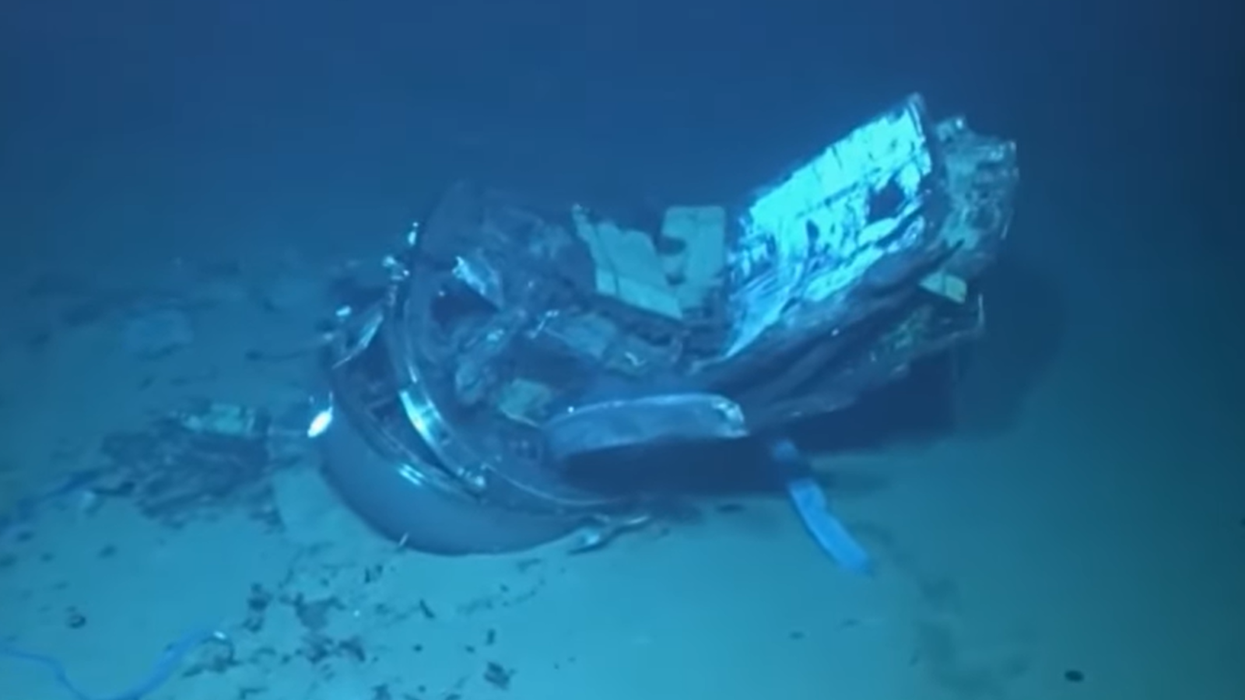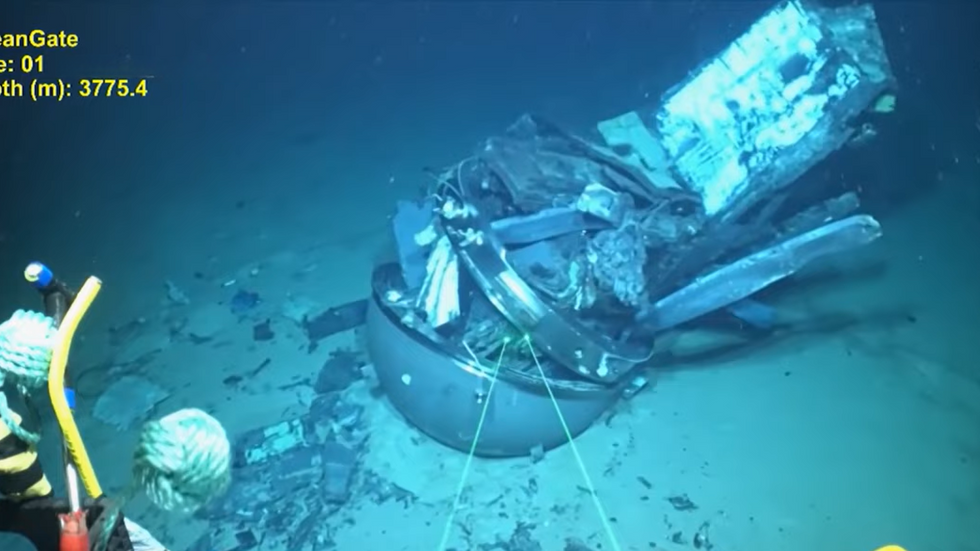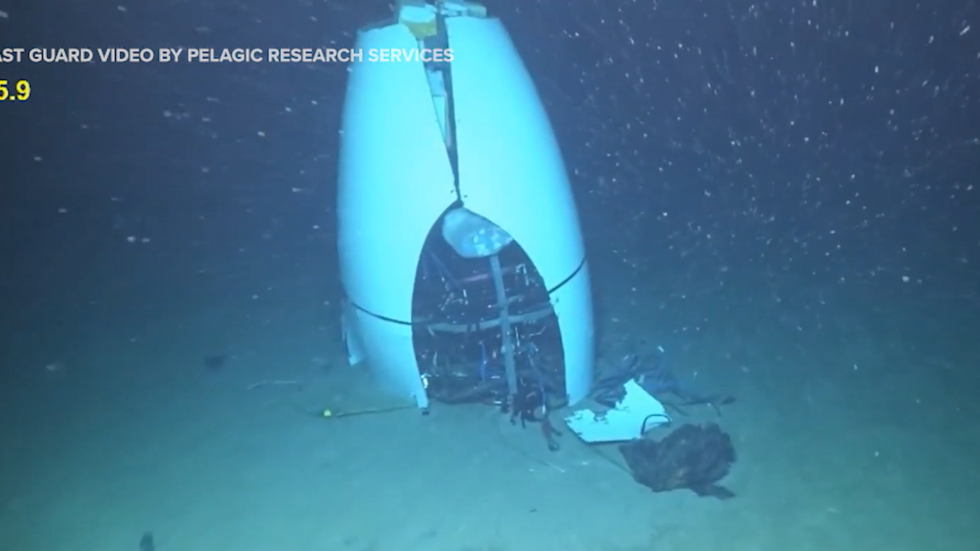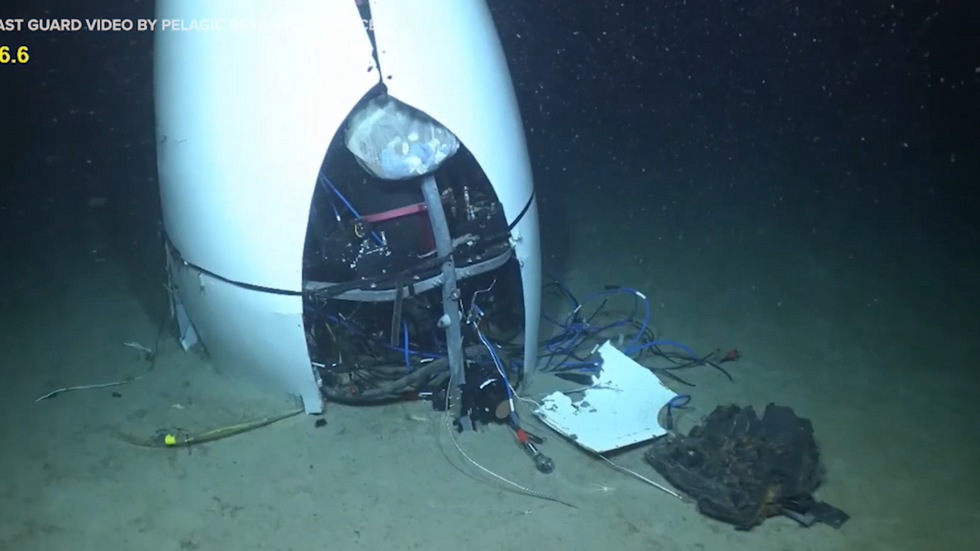Horror detail in Titan sub investigation may finally explain fault which killed entire crew 4,000 metres underwater

The wreck of the OceanGate Titan, as captured by US Coast Guard cameras
|US COAST GUARD

'There was nothing anyone in the sub could have done if the hull failed,' one OceanGate employee told an inquiry
Don't Miss
Most Read
Investigators looking into the wreck of the OceanGate Titan submersible whose crew was killed last year have uncovered the cause of the fault which may explain its catastrophic implosion.
OceanGate's former scientific director Dr Steven Ross, giving evidence to an ongoing US Coast Guard inquiry on Thursday, revealed that the doomed submersible experienced a "platform issue" a few days before its fatal mission to the Titanic wreckage last June.
The malfunction, Dr Ross said, caused passengers to "tumble about" inside, and left one crew member crashing into the sub's interior bulkheading.
But one physicist - who was not involved in the hearing - has suggested a faulty connection at the front of the vessel, between the carbon fibre hull and titanium ring, may have caused the implosion.
Scott Manley, analysing newly-released footage of the Titan wreckage on the seafloor, suggests the failure began at the front bulkhead, where the carbon fibre hull meets a large titanium ring.
"Based on what I know and what I see here, the pressure hull failed at the glue join between the carbon fibre and the titanium ring on the front of the sub," Manley wrote on social media, contradicting the long-held hypothesis that the hull collapsed under pressure from the centre.

The sub's mangled hull, seen on the seafloor thousands of metres below the waves
|US COAST GUARD
Manley's analysis indicates that water rushed in from the front, causing a catastrophic chain reaction that tore the submersible apart from the inside out - 4,000 metres below the waves.
He explained that as water entered through the front, it created a crack that spread towards the back of the submersible, causing the hull to push backwards and the sides to squish inwards.
"What's happening now... Equally, you've got waters rushing in through [the front gap] and the front nose, which popped the window out," Manley noted.
The rush of water effectively tore the submersible apart, smashing into the rear bulkhead and separating the cone-shaped tail from the rest of Titan.
MORE LIKE THIS:

Coast Guard investigators have released undersea footage from the wreckage
|US COAST GUARD
Manley suggested that a mismatch in flexibility between the titanium and carbon fibre sections, or potentially faulty adhesive, could have led to the catastrophic failure.
Eyewitness Renata Rojas, a mission specialist for OceanGate, provided a poignant account of the crew's final moments before the dive at Thursday's hearing."
"I saw five people smiling on the way to their journey," Rojas told the US Coast Guard inquiry. "They were just happy to go, that's the memory I have."
Rojas described how communications were lost during the descent, and recalled asking colleagues, "We haven't heard from them, where are they?"

All five people on board died in the horror implosion
|US COAST GUARD
As the situation unfolded, Rojas said, "We went into 'go mode'," with discussions about contacting the coast guard.
She noted that while there were contingencies for some scenarios, "there was nothing anyone in the sub could have done if the hull failed."
Rojas also recalled a 2021 expedition in which the dome fell off the submersible as it was being pulled out of the water.
As the Titan was being hauled onto its launch ship, its crew lost hold of it - and the dome vacuum of the sub broke.
She said: "There was only, I think, two bolts or four bolts on the dome... It started dripping, falling off."
As a result, safety crews at OceanGate installed 18 bolts on the dome for subsequent expeditions - but in 2023, all five people on board - Hamish Harding, Shahzada Dawood, his son Suleman Dawood, Paul-Henri Nargeolet, and OceanGate founder Stockton Rush - were killed in the implosion.







